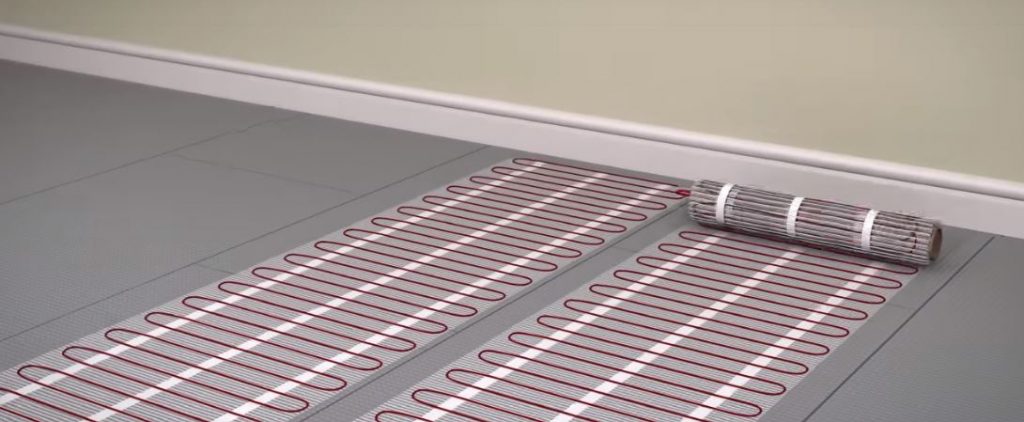Underfloor heating is a great choice for a broad range of applications, and with energy prices in the UK skyrocketing to record highs and continuing to do so in the foreseeable future, many homeowners are seriously considering their options.
If you’re among the many concerned homeowners looking to buy underfloor heating, you probably have plenty of burning questions like “What do I need to know about underfloor heating?”, “Is underfloor heating efficient?” and “How much does underfloor heating cost?”
We dug deep to put together a comprehensive underfloor heating guide to lend a helping hand with your heating and ventilation.
We’re going to cover the most important aspects of underfloor heating and how it works, the different underfloor heating types, the price of underfloor heating and much more!
Table of contents:
- What is underfloor heating?
- Types of underfloor heating
- Which underfloor heating is best? Electric vs. Water
- Cost of underfloor heating in the UK
- What are the best floors for underfloor heating?
- How to use underfloor heating
- Pros and cons of underfloor heating
What is underfloor heating?
Underfloor heating (UFH) is an indoor climate control system which regulates room temperature through pipes or wires embedded in the floor itself. These water or electrical elements, depending on the type, heat the space through radiation (about 80% of heat transfer), conduction and convection.
How does underfloor heating work?
In effect, underfloor heating transforms your floor into a giant hidden radiator that gently heats the entire room from the ground up, making sure those irritating cold corners and spots are a thing of the past. This way, it’s able to achieve even temperature from wall to wall, providing greater comfort.
To make things even better, UFH is highly efficient, helping you reduce your energy consumption and energy bills over time. This is because it’s evenly distributed across the entire room rather than in specific spots, underfloor heating operates at much lower temperatures than typical radiator systems (around 40°C compared to ca. 65°C) to achieve the same overall temperature. The result is lower energy consumption without any compromises on performance.
Now that we have a clearer idea of how underfloor heating works, it’s time to take a closer look at the different types of underfloor heating solutions available on the market.
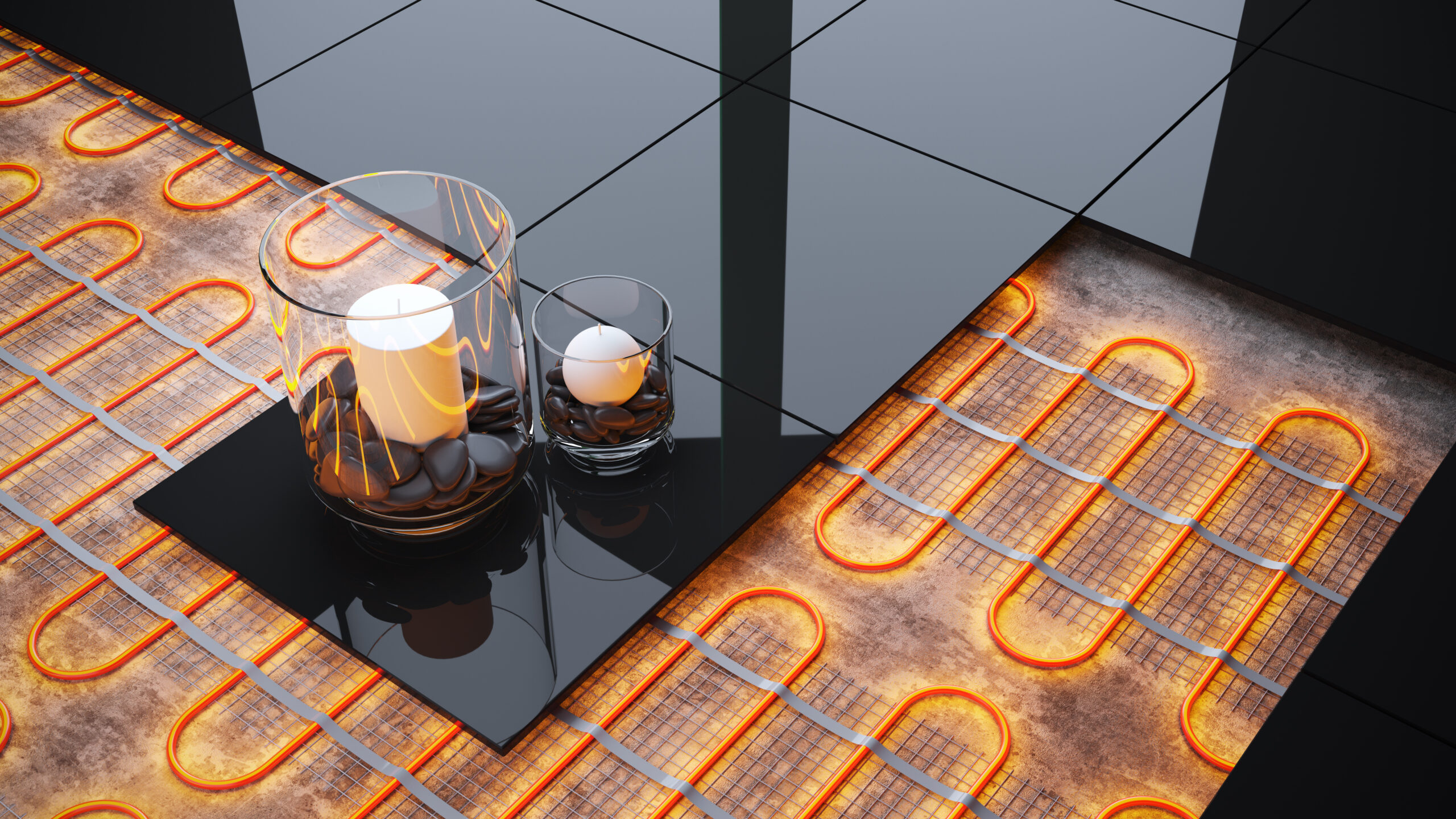
Types of underfloor heating
There are two underfloor heating options – hydronic or wet underfloor heating and electric underfloor heating. As you’ll see next in our underfloor heating guide, each has specific advantages.
Wet underfloor heating
Wet or hydronic underfloor heating is connected to your boiler or a heat pump. It consists of a series of pipes found under the floor covering, which circulate water at approximately 30°C to 35°C, radiating heat to the floor and the room above.
This type of underfloor heating is usually divided into separate zones, meaning you can use individual thermostats to set different temperatures in different zones.
On the downside, wet underfloor heating systems need to be embedded into a layer of sand and cement screed, which results in the floor rising by as much as 75mm.
All in all, wet underfloor heating is ideal for larger homes and new builds.
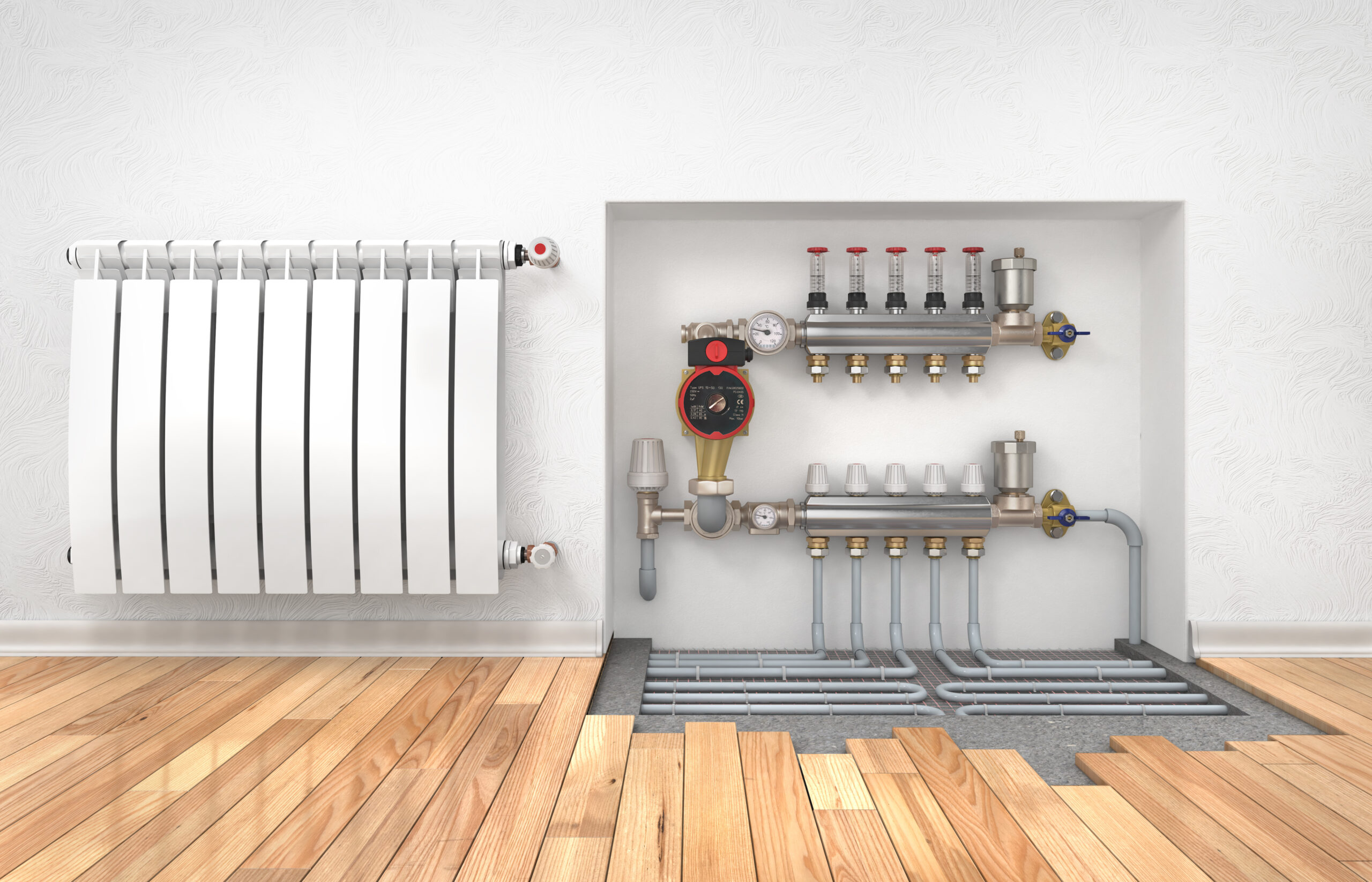
Electric underfloor heating
Electric or dry underfloor heating features thin wires or matting fitted under the floor covering. Because the installation process is quick and easy and causes little disruption, it’s ideal for retrofits.
Connected to your main electricity supply, dry underfloor heating warms up faster than wet underfloor heating. However, it also loses heat more quickly once turned off.
So, electric underfloor heating is ideal as a standalone solution for one or two rooms rather than your entire home.
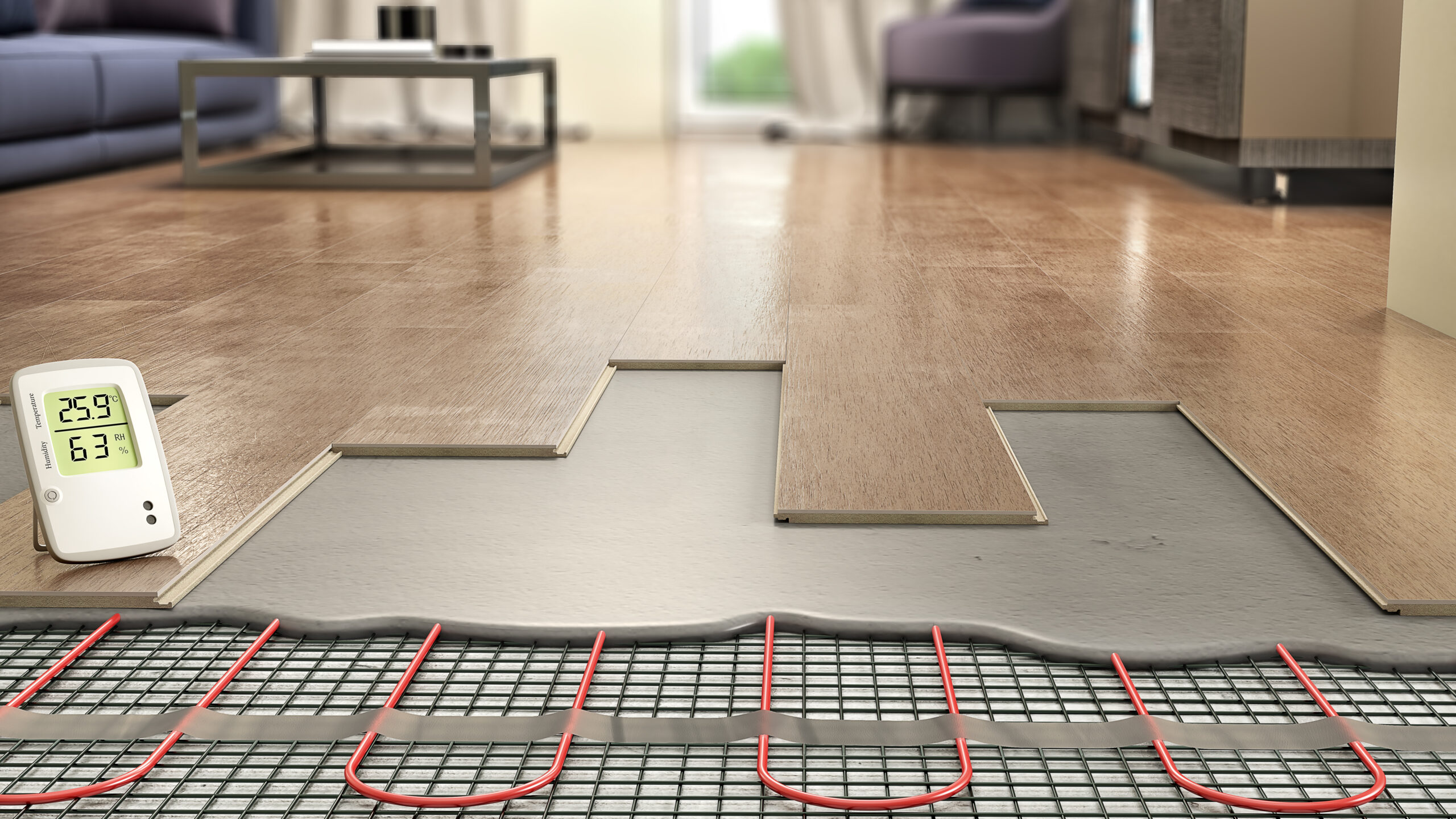
Which underfloor heating is best? Electric vs. Water
Whilst the underlying concept is the same, electric underfloor heating and water underfloor heating are quite different in their benefits and drawbacks.
In the UK, people more commonly have electric underfloor heating in just one or two rooms. Still, the popularity of water underfloor heating is on the up. Below we explore the two and what they offer a user.
Ease of use
Both systems take advantage of a thermostat, so you can see what temperature the system is running at and make changes to this. Water underfloor heating connects to a boiler a manifold is also installed which regulates the temperature to make sure it isn’t too hot and connects all the pipes to the boiler.
Additionally, both systems use a regulator of some sort and a thermostat, so they’re pretty much on par with ease of use.
Winner: Draw
Ease of installation
It’s commonly advised that water underfloor heating is not a DIY job due to the specific nature and installation of a manifold. Perhaps you could lay the pipework where you’d like, but connecting to a boiler and also doing other bits like bringing up the height of the floor to make room for pipes isn’t DIY-recommended.
In contrast, electric underfloor heating systems are easy to roll out yourself. They’re thinner so there’s no need to raise the height of the floor, and you can install this anywhere you can get an electricity supply. You do, however, need a qualified electrician to connect this up and certify it.
Winner: Electric underfloor heating
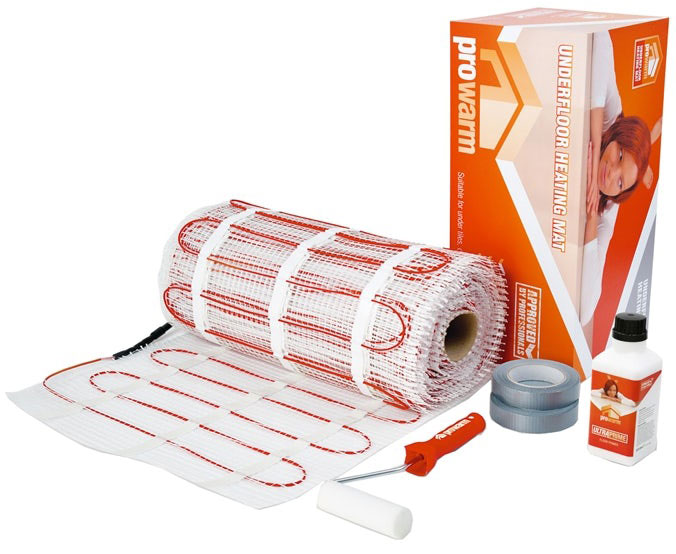
Efficiency and running
Water underfloor heating systems keep their water between 27 – 31°C to maintain the best actual floor temperature. It goes without saying that this temperature will vary depending on floor type as heat may struggle to get through extra thick carpet for example.
Due to this low running temperature, lower than radiators, water underfloor heating systems are often more efficient throughout a whole home than radiators are. Electric underfloor heating systems are more efficient for small areas, as their running cost is higher.
Winner: Electric underfloor heating for small areas
Winner: Water underfloor heating for large areas
Now that we know how the two types of underfloor heating stack up against each other, let’s see how much they’re likely to set you back.
Cost of underfloor heating in the UK
The typical underfloor heating cost per m2 for wet UFH in new build ranges from £30 to £50. Keep in mind that this figure does not include the screed, which is extra. However, with a few DIY skills, you can install underfloor heating all by yourself.
Electric UFH also comes out to approximately £50 per m²; however, you might be able to find dry underfloor heating systems in the UK for as little as £20 per m². Higher quality systems might set you back by as much as £85 per m².
How about the cost of installation?
While a seasoned DIY specialist should be able to install both types of systems on their own, it’s best to leave that bit to the professionals for extra peace of mind.
When it comes to electric underfloor heating, the installation fee in a new build is in the region of £50 – £75 per m², whereas for renovations it’s around £60 – £85 per m².
With wet underfloor heating, the costs are considerably higher, around £120 – £135 per m² in new builds and as much as £135 – £185 per m² in renovated properties.
At the end of the day, the ultimate cost of underfloor heating installation will depend on several factors, such as the size and age of the property, the number of rooms where UFH needs to be installed, the type of system and, last but not least, whether additional work is required.

What are the best floors for underfloor heating?
While underfloor heating can work with virtually any type of floor covering, some are better than others.
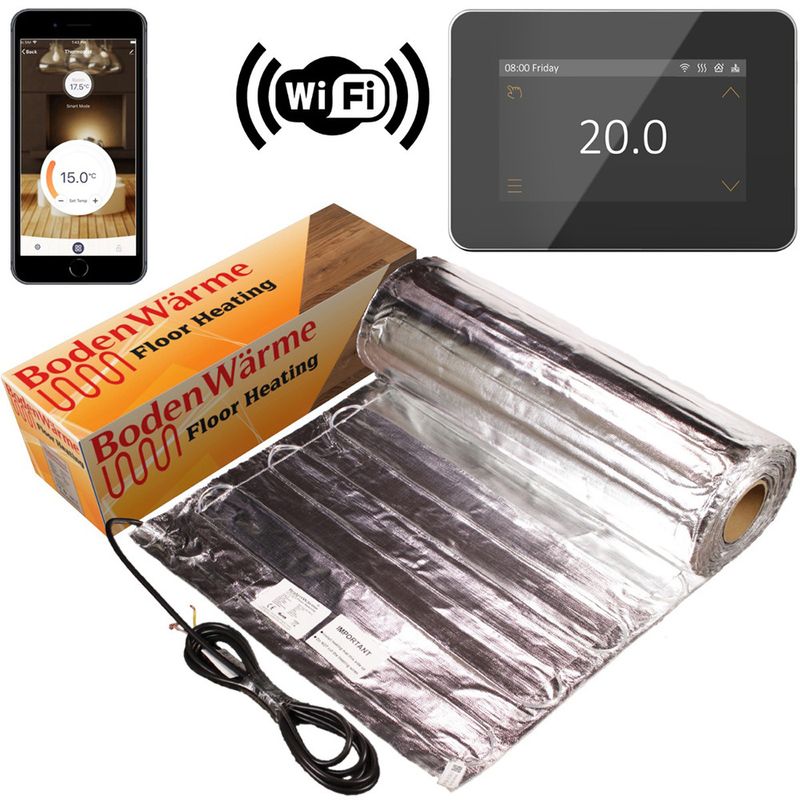
Stone and tiles
In addition to looking great, solid stone and tile coverings work great with underfloor heating systems. That’s because they have the highest thermal conductivity of all services and retain heat the longest by far.
In addition, solid floor can be heated to temperatures of over 29°C, resulting in an impressive heat output of up to 200W/m².
Wood
Wood has a lower thermal conductivity than stone and tiles, but it’s still a perfectly viable choice. When it comes to UFH, engineered wood floors are preferable to natural ones because they deal better with temperature changes. To find out more, head over to our dedicated guide.
Keep in mind that if you’re using underfloor heating with your timber floor, the temperature must not exceed 27°C.
Laminate and vinyl
Affordable and easy to maintain, laminate and vinyl floors are often found in kitchens and bathrooms. They work really well with UFH because they have high heat conductivity. As an added benefit, these coverings stay cool during the summer when your heating is switched off.
One thing to bear in mind, though:
Only wet underfloor heating systems should be used with laminate and vinyl floors – not electric ones.
Carpet
Carpeting may be a popular option, but it doesn’t work great with UFH. Most carpets are designed to insulate, so they have low thermal conductivity.
That being said, thin carpets of under 2.5 tog are perfectly compatible with underfloor heating. While they take longer to heat up, these carpets can retain heat quite well.
As a result, carpeting with underfloor heating is a popular choice for bedrooms and living rooms.
Last but not least, make sure to avoid underfloor heating if your floor is covered with solid wood, cork or thick pile carpets.
How to use underfloor heating
If installed properly by a professional, underfloor heating is virtually maintenance-free. Still, it’s a good idea to have it checked once a year or so to avoid unpleasant and, more importantly expensive, surprises.
Other than that, underfloor heating is straightforward to use. Let’s take a look at some ways to make the most of it.
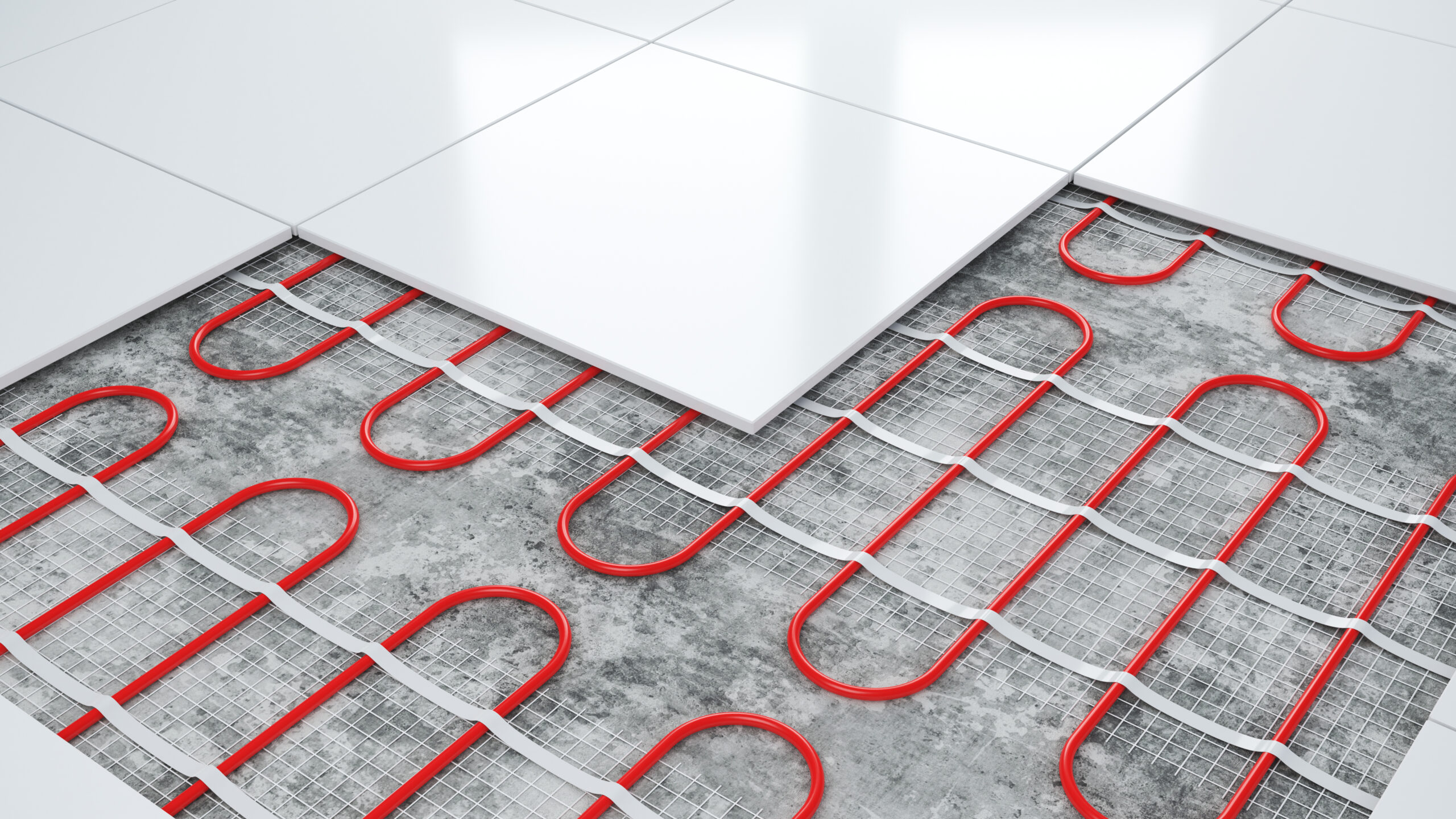
So, your brand-new underfloor heating system is finally in place, it’s cold outside and you’re itching to try it out, right? Well, in order to avoid shocking the system, there are a couple of things you need to consider before turning on underfloor heating for the first time.
First, you need to check if the screed is completely dry. Different screeds come with different drying times, and if yours is still damp, switching on the system may cause cracking to the floor or other damage.
Second, consider the floor covering. Some coverings, like engineered wood, do not react well to sudden changes in temperature. So, they should be heated gently at first.
Which brings us to the next question, what temperature should underfloor heating be set at?
The ideal temperature setting should be in the 18˚C –26˚C range. So, what is the maximum temperature for underfloor heating?
The answer to this question depends on your floor covering. Some materials, like stone and tile, can be heated to underfloor heating temperature in excess of 29˚C. In contrast, others, like timber, vinyl and linoleum can only be heated up to 27˚C.
What is the most efficient way to use underfloor heating?
While UFH is incredibly efficient in and of itself, some sound underfloor heating advice is guaranteed to take your home’s energy efficiency to the next level and help you reduce your energy bills significantly.
To begin with, make sure your insulation is up to the required standards. You might want to get cavity or solid wall insulation. Sub-floor insulation should be part of your UFH, as it prevents the loss of heat to the ground, ensuring all the heat goes up into the floor and the room above.
UFH can function at low temperatures, but that doesn’t mean your home is going to be cold! When you want greater warmth, simply crank up the thermostat. So how long does underfloor heating take to warm up?
In general, electric UFH is faster than water, but both types of systems are pretty quick. If your home is well-insulated, you’ll be able to feel the difference within a couple of minutes.
If that’s not the case, however, it may take up to 20 minutes or half an hour. If you have smart thermostats and other smart heating controls, you can control the temperature in different rooms on the go, ensuring the heat comes on only when you need it, thereby avoiding wastage.
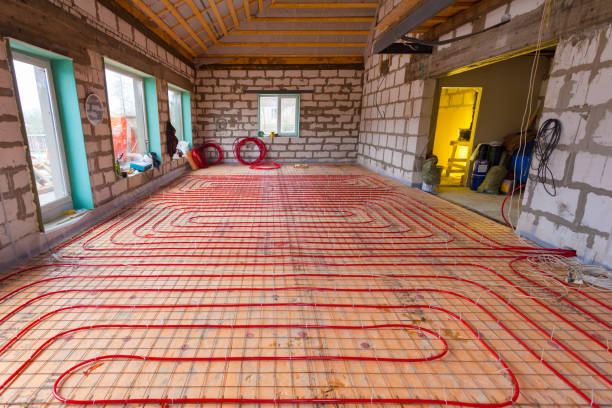
Pros and cons of underfloor heating
An ancient invention, underfloor heating has been around for more than 7,000 years. So, it should come as no surprise that it offers numerous advantages and very few disadvantages.
UFH is comfortable, safe, easy to run and highly efficient. In addition, it will increase your home’s value and create more space for furniture items and design experimentation since you won’t need any radiators!
The only possible downside of underfloor heating we can think of is the initial cost. Including the price of installation, this can amount to a significant sum which you need to come up with upfront. However, UFH will easily pay for itself over time.
UFH heating is a long-term investment which will help you save money over time while improving your home’s comfort.
Now that you’ve read our comprehensive underfloor heating guide, you’re well equipped to make the right choice of UFH system for your home.
